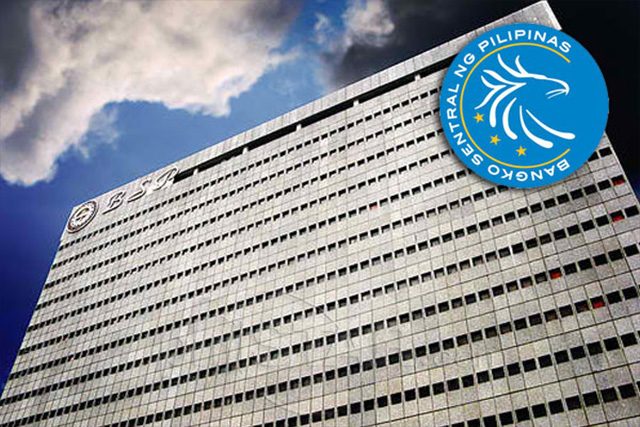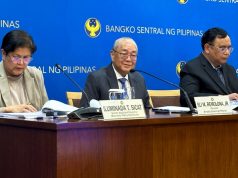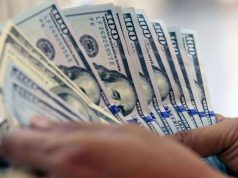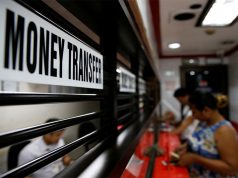MANILA — The Philippine central bank kept its benchmark interest rate steady on Thursday, but left the door open to further policy easing to guard against rising economic risks from a heated Sino-US trade war and slowing global growth.
The central bank held the rate on its overnight reverse repurchase facility at 4.5%, opting to adopt a wait-and-see stance to assess the impact of its quarter-point rate cut in May and a phased reduction in banks’ reserve requirement ratio.
“The Monetary Board believes that the manageable inflation outlook and firm domestic growth prospects support keeping monetary policy settings steady for the time being”, Bangko Sentral ng Pilipinas (BSP) Governor Benjamin Diokno told a media briefing.
The governor, however, raised concerns about the risks to the domestic economy from Sino-US trade tensions and slowing global growth.
Despite the uptick in last month’s consumer prices, the central bank lowered its inflation forecasts for this year and next due to declining oil prices and the prospect of a stronger peso, giving it policy headroom to support the economy.
Inflation is now expected to average 2.7% this year and 3.0% next year, the central bank said, down from its previous estimates of 2.9% and 3.1%, respectively. Both forecasts are well inside its 2%-4% target for both years.
“There is room for easing monetary policy because the view on inflation is quite optimistic”, BSP’s deputy governor Diwa Guinigundo said when asked about the outlook for policy.
Only five of 11 economists in a Reuters poll had predicted no change in rates, with the rest expecting a 25 basis points cut.
Capital Economics said in a note to clients that “with inflation set to fall back again over the coming months, we think the central bank will resume its loosening cycle later in the year.”
The Philippines‘ decision came hours after Federal Reserve policy review, which as widely expected left rates unchanged though policymakers signaled possible monetary easing as early as next month to combat rising economic risks.
Despite slowing growth momentum over the past two quarters, the Southeast Asian economy has been relatively insulated from a heated US-China trade war as domestic consumption accounts for three-fourths of gross domestic product.
As well, a precipitous fall in oil prices has given a boost to oil importers such as the Philippines and India, helping to keep inflation under control. The peso has also been fairly stable, allowing the central bank to ease policy without triggering a sharp fall in the currency.
Indeed, the BSP’s signal of possible further easing underscored concerns among global policymakers of the rising economic risks, as the Sino-US tariff war hurts global trade and investment in a blow to world growth.
The Philippine economy expanded at its slowest pace in four years in the first quarter, and Capital Economics expects growth to “continue to underwhelm,” predicting a second rate cut in August.
Guinigundo said the central bank expects a slight appreciation in the peso this year to 52.01 against the dollar from a previous estimate of 52.06. For next year, the peso is seen firming against the dollar to 51.50 from an earlier forecast of 51.78.
Policymakers expect government spending to pick up in the second half after the delay in the budget approval, making this year’s 6-7 percent growth target still feasible.
The peso closed firmer at 51.645 against the U.S. dollar from Wednesday’s 51.890 after the policy decision, while the benchmark stock index had ended 0.1% higher ahead of the rates announcement.
— Reporting by Karen Lema and Neil Jerome Morales; Editing by Shri Navaratnam









